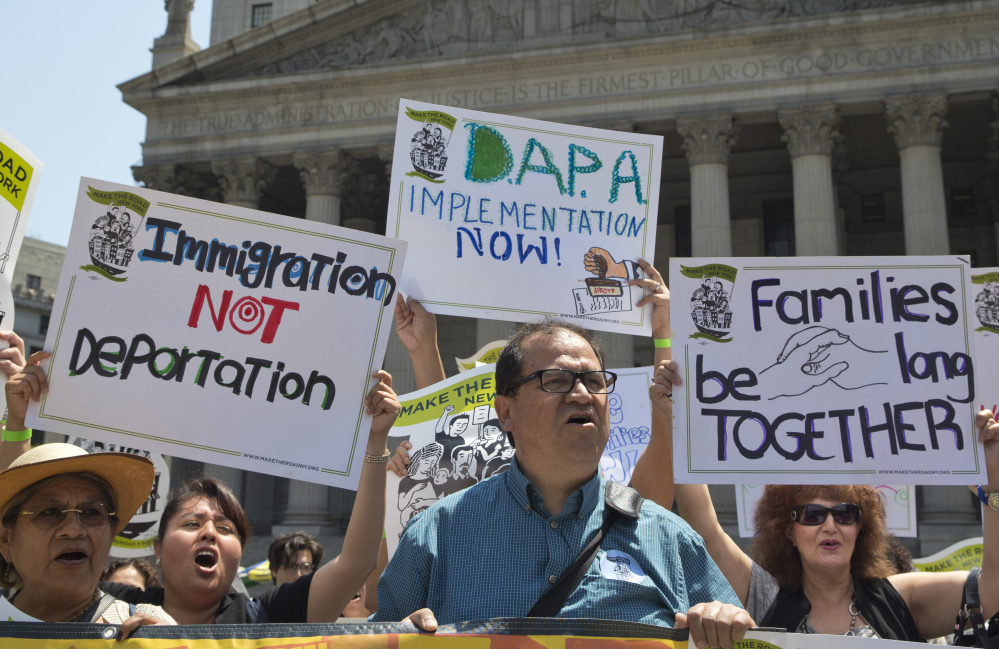Editor’s note: This story is part of an occasional Associated Press series examining the issues at stake in the presidential election between now and Election Day. Read more from “Why it matters.”
THE ISSUE
An estimated 11 million people are living and in many cases working in the United States illegally. The questions of what to with them and how to curb future illegal immigration have been a campaign issue for more than a decade. Never more so than now. Illegal immigration goes to the heart of Donald Trump’s presidential campaign. It’s a source of his strength among supporters, contention among critics and confusion over what he really intends to do.
The debate over immigration in Congress has focused on which should come first: stiffer enforcement at the border and inside the country or a path to legal status for the millions of people who are already a part of their communities. Efforts to overhaul immigration laws have routinely been defined by Republicans supporting an enforcement-first approach with Democrats preferring a path to legal status for those here while working on security efforts at the same time. The result? A standstill.
WHERE THEY STAND
Trump vows to build a wall along the Mexican border complete with a “big beautiful door.” He vows Mexico will pay for the wall; Mexico vows it won’t. Trump had pledged to deport all the people living in the country illegally. Now he’d focus on deporting people who have committed crimes beyond their immigration offenses. As for the rest, he’s proposing no path to legal status while they are in the U.S.
Democrat Hillary Clinton has pledged to push for an overhaul that would enable citizenship – not just legal status – for many living in the country illegally. She has also said she would expand programs that protect some groups of immigrants from deportation, including those who arrived as children and the parents of U.S. citizens and legal permanent residents. President Obama’s effort to shield parents from deportation is on hold after the Supreme Court deadlocked on a decision in a case challenging the president’s authority to expand the deportation protection program.
WHY IT MATTERS
Illegal immigration has remained at nearly 40-year lows for the last several years and several estimates of the immigrants living in the country illegally suggest that Mexican migration trends have actually reversed, with more Mexican nationals leaving the United States than arriving. And billions of dollars have been spent in recent years to build fencing, improve technology used at the border and expand the Border Patrol.
Nonetheless the Mexican border remains a focal point for those who argue that the country is not secure. As evidence that the border is not secure, many Republicans point to the illegal crossings of hundreds of thousands of unaccompanied children and people traveling as families in recent years. The surge of children and families from Central America in 2014 was described as a crisis at the border and the volume of people apprehended overwhelmed government resources.
At the same time, the White House has dramatically slowed the pace of deportations after setting a record by sending home more than 409,000 people in 2012. During the 2015 budget year, the administration removed 235,000 people.
Multiple efforts to overhaul immigration policies have repeatedly ended in a legislative stalemate as Republicans and Democrats spar over how to approach both securing the border and dealing with those immigrants already here.
Send questions/comments to the editors.



Success. Please wait for the page to reload. If the page does not reload within 5 seconds, please refresh the page.
Enter your email and password to access comments.
Hi, to comment on stories you must . This profile is in addition to your subscription and website login.
Already have a commenting profile? .
Invalid username/password.
Please check your email to confirm and complete your registration.
Only subscribers are eligible to post comments. Please subscribe or login first for digital access. Here’s why.
Use the form below to reset your password. When you've submitted your account email, we will send an email with a reset code.